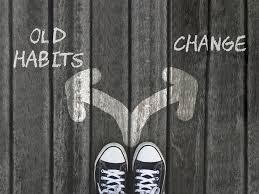A characteristic of every human being is the tension between Discomfort and Familiarity. Some of you might respond, appropriately, “Well Duugghhh Dave, isn’t that why it’s called discomfort?”
It’s obvious, we are comfortable with that which is familiar. How we work, how we spend our time, where/who we find joy. The more familiar it, is the more comfort we have, the more we tend to stick with doing the familiar. Even if they don’t produce the outcomes we want, even if they don’t make us happy, we are programmed to “seek what we have known.”*
Our challenge with change, often has less to do with knowing what to do, but it’s our inability to resolve our discomfort. The challenge of doing what we need to do and that which we’ve become accustomed to doing.
Generally, we don’t suffer from lack of knowledge. For example, if we look at how we engage our customers, we know we have to focus on their businesses, goals, aspirations, and their challenges. We know we are more successful if we create two way conversations about what they are trying to achieve, the challenges in doing this. In fact we know if we are to be successful in achieving our own goals, we have to help our customers overcome their own “knowing-doing,” gap.
Yet despite all of this. Despite all the training we undertake on selling, value creation. Despite the 1000s of books and “expert” articles, we layer our own knowing-doing gap on top of our customers’ knowing doing gap.
As a result, both we and our customers are trapped in the conundrum of familiarity. Doing that which we are familiar, hoping it enables the customer to abandon that which is familiar to them, embracing discomfort.
If we are to help our customers change, we have to confront our own resistance, our tendency to fall back into the familiar.
While there are all sorts of bromides around becoming comfortable with discomfort (and I’ve probably offered a number), the reality is translating what we know we should do into action is discomforting. And our default wiring is for that which is familiar–even though we may not be happy with it and it is not producing what we want.
How do we conquer this?
There are a lot of things and techniques, that we already know. I suspect the real issue is a number of little things, a number of small steps, perhaps taken quickly. The discomfort of each one may be smaller. I, also, suspect, doing these things as a team, rather than doing these as individuals helps us manage our discomfort. We aren’t alone in our discomfort.
Some other steps, adapted from Pfeffer and Sutton’s, the Knowing Doing Gap include:
- Understanding the why before focusing on the how.
- Action counts more than talking about it. However “smartly” we talk, it does not move us forward.
- Mistakes will be made, learning from them and adjusting what we do
- Related to the previous point, we will not change is there is fear, so we have to do everything we can to drive out fear.
- Knowledge comes from doing and teaching others how.
Until we as sellers, choose begin to choose discomfort over familiarity for ourselves and our own organizations, we will never be able to serve our customers in the most meaningful ways, helping them choose and succeed through discomfort.
*From “101 Essays That Will Change The Way You Think,” by Brianna Wiest.

“Growth and comfort do not coexist.”Ginni Rometty, IBM CEO.
“Do one thing every day that scares you.” – Eleanor Roosevelt
“I constantly get out of my comfort zone. Looking cool is the easiest way to mediocrity. The coolest guy in my high school ended up working in a carwash. Once you push yourself into something new. And whole new world of opportunities opens up. But you might get hurt in fact you will get hurt. But amazingly when you heal — You are somewhere you’ve never been.” – Terry Crews
John, great quotes! Thanks for sharing!